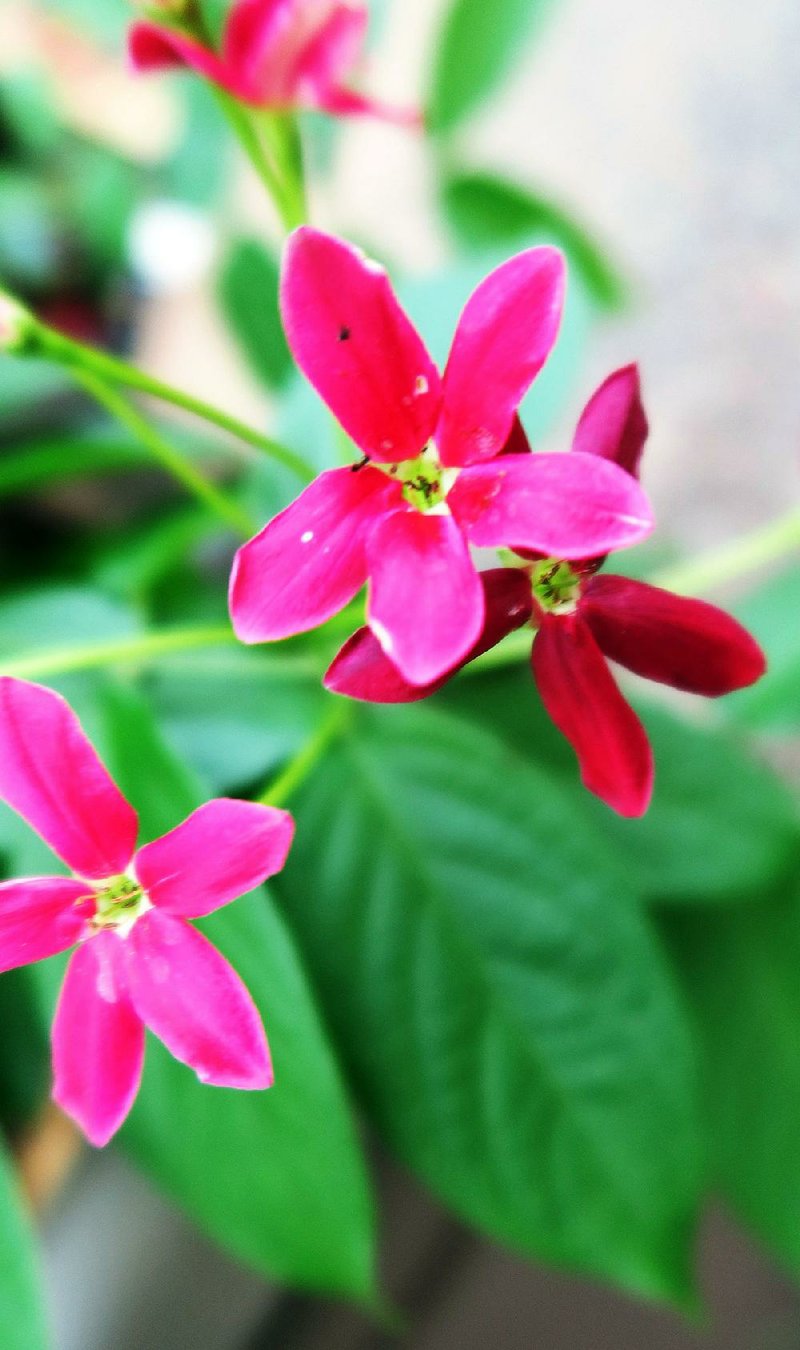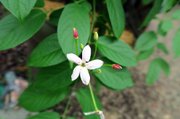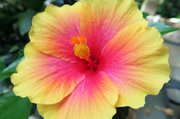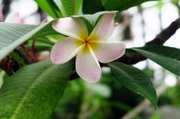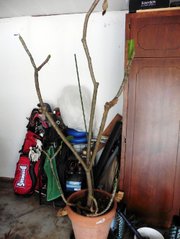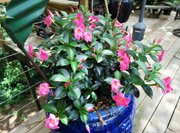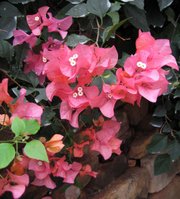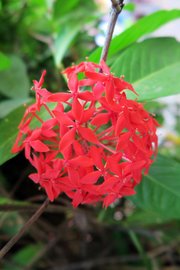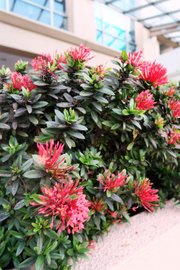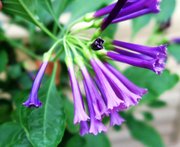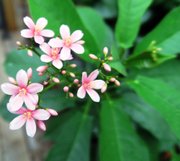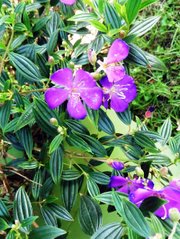When temperatures are rising and rain is not falling, we all still want color in our gardens. Few plants are as showy as tropical flowers.
Thanks to their exotic origins, they have what it takes to live in warm and very humid environments like jungles, so they do well outdoors in our summers. They can produce color all season.
It wasn't long ago that gardeners who wanted to enjoy their beauty had to visit Hawaii. Today a wide range of tropicals -- flowering as well as foliage plants -- is available at nurseries and garden centers statewide.
HIBISCUS
One of the most common of the tropicals is the flowering hibiscus. Hibiscus plants are in the mallow family and include tropical (which die in the cold) and winter-hardy shrubs.
In fact, the common marshmallow you see blooming in the ditches now is in the same family. Its edible cousin is the common okra. Notice the similarity in the blossoms?
The showiest member of the mallow family is the tropical or Chinese hibiscus, known botanically as Hibiscus rosa-sinensis. This plant is native to tropical Asia. It forms a lovely green plant with leathery, glossy leaves, and some varieties having variegated foliage.
Depending on variety, blossoms can be single or double, all one color or multicolored, with colors ranging including white, yellow, orange, pink and all shades of red. Each flower only lasts one day, but given plenty of sunlight and ample nutrients, these plants can produce enough flower buds to give you flowers all season.
MANDEVILLA
Mandevilla is a beautiful and highly popular tropical flower. The first mandevilla Arkansans could buy was a vigorous vine with vibrant pink blooms. Through breeding,
we now have more options, including plants in various shades of pink, red, white, yellow and even apricot blooms.
The plants can be prolific vines or more compact and bushy plants. All thrive in full sun.
BOUGAINVILLEA
Bougainvillea is often sold in hanging baskets where its showy bracts can cascade down.
The true flower is the tiny white one inside the colorful bracts -- which can be pink, red, yellow or orange.
Bougainvillea usually do best if given limited space to grow, so their roots are constrained. If you give them a large container, they spend too much energy growing foliage and roots, which can limit the flowers.
Do be aware that there are small thorns along the stems.
IXORA
Ixora is an evergreen shrub in tropical climates, but here it makes a fantastic container-flowering plant that can bloom nonstop all summer.
The flowers come in shades of orange, red or yellow. It will do well in a container or treated as a summer annual when planted in the ground.
It will not survive our winters outdoors.
PLUMERIA
Visitors to Hawaii have seen vendors selling small plastic bags with what appears to be a brown sticks inside. This is a dormant piece of a plumeria.
Planted in soil and given water and sunlight, it can produce a glorious plant covered with fragrant blooms in a wide range of colors, including yellow, orange, red, white and pink.
ALSO LOVELY
Some other less common, but well worth trying, tropical plants include:
• Jatropha, with blooms held above dark foliage, can be hard to find but is worth looking for;
• Iochroma, with clusters of purple or apricot trumpet-shaped flowers;
• Tibouchina, with deep purple, velvet blooms; and
• Rangoon creeper, a beautiful vining plant with star-shape flowers that change from white to deep pink as they age.
KEYS TO SUCCESS
Tropical flowering plants bloom on new growth, so your goal is to keep them supplied with energy.
For most tropicals, the more sunlight they get, the better they will bloom.
We also grow most of them in containers, and with frequent watering, the nutrition leaches out quickly. Water and fertilize regularly to keep them at their best.
Depending on the size of the container, daily watering is likely to be needed during the hottest, driest times. Frequency will depend on the size of the container, the size of the plant and how hot and dry conditions become.
To keep your plants in constant bloom, fertilize often -- every two to three weeks with a water-soluble fertilizer, or less frequently with one of the slow-release types.
WINTER INDOORS
These plants will not survive outdoors year-round in Arkansas. If you plan to keep them from year to year, they need to be moved indoors in the fall along with your other houseplants.
While most can make it indoors, they typically don't thrive due to the lower humidity and lower light inside houses. Grouping plants together can help to increase the humidity some too. If you have access to a greenhouse, they will be much happier.
Be sure to carefully inspect them for pests prior to bringing them indoors, so they do not infest other plants.
When you move them indoors, prune as little as you can, removing only what you must to fit them through the door. Move them to the sunniest spot possible and reduce your watering to once every week or two.
The shock of transplant, low humidity, cooler nighttimes and lower light conditions often lead to leaf drop and some tip die-back after their move. Let them become acclimated to their indoor conditions before you do any more pruning.
Pests are not common but can include aphids, white fly and spider mites. Monitor for them closely and control as needed.
With ample light, you may be lucky and continue to see some blooms, but don't count on it.
If you were to just move the plant in without cutting it back or repotting it, it would still have foliage but few flowers.
REVIVAL TIME
In mid-February, as the days begin to get longer, the plant will begin to grow again. Cut it back by two-thirds to one-half of its original size.
If natural light is not available, give it some artificial light.
Begin fertilizing again, using any water-soluble or houseplant fertilizer. This should begin a healthy growth phase, so that when the plant is moved outside in late April, it can take off and begin blooming almost immediately.
You might also need to upgrade the container or repot it, as a root-bound plant won't grow very well.
Many gardeners find they have the best luck buying new plants every year, and luckily for us, we are blessed with ample choices and lower prices these days.
Whichever tropical plant you choose, make sure you give it plenty of sunlight. Tropical plants will produce an outstanding floral display in the heat of Arkansas' summer, with just a little care.
Janet B. Carson is a horticulture specialist for the University of Arkansas Cooperative Extension Service.
HomeStyle on 07/15/2017
